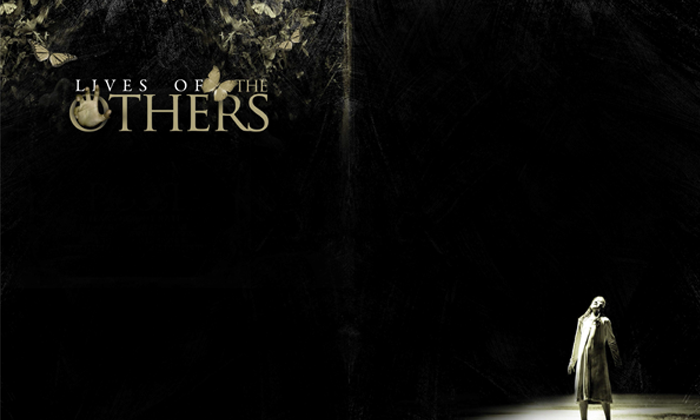The growing popularity of movies about demonic possession, ever since The Exorcist, has firmly planted this genre as one of the most significant within the horror cannon. And in light of the release of the new horror film Possession, a Jewish take on The Exorcist, it’s interesting to see how this genre has developed over the years, and increased in popularity worldwide. Perhaps the basis for such international acceptance of this genre may have something to do with the fact that almost every religion and culture has stories of possession.
Possession, like The Exorcist, is inspired by a true story, based on a Los Angeles Times article called Jinx in a Box. It is about a little girl Em who becomes oddly obsessed with an antique wooden box purchased at a yard sale. But as her behaviour becomes increasingly erratic, her parents fear the presence of a malevolent force in their midst and soon learn that a dislocated spirit is inhabiting their daughter. And so, they bring in a member of the clergy.
When one thinks about a possession film, the first thing that comes to mind is a scenario where a person violently lashes out against the very people they care about, acting under the influence of something evil that causes them to have a different voice and appearance. Possibly, one of the big reasons that draws people to this sub-genre of horror movies, is the very strong theme of personal redemption. In the context of the zombie genre for instance, a possessed person is just like a zombie, a shell of what that person used to be and there is hardly any cure. But in the possession genre, while the other characters recognise that their loved one is completely different now, they still care for and love that person enough to help them get through the situation alive.
The Exorcist (1973) , the standard by which all other demonic possession movies are judged, has terrified millions of viewers over the years with its shocking portrayal of the possession of a young girl, introducing elements like levitation, vomit, profanity and body contortions, which have become standard possession movie elements today. The possessed Regan MacNeil will forever haunt our dreams with the Green Pea soup, head turning, crotch stabbing and foul-mouthed talk.
“While most of these possession movies have somewhat a happy ending with the possessed person being returned back to their original state, The Exorcism of Emily Rose and Paranormal Activity stand out as exceptions to this rule.“
The Exorcism of Emily Rose (2005) , based on the true story of Anneliese Michel, a German girl who died during the course of an exorcism, combines the genres of demonic possession horror and courtroom drama, putting a whole new twist to the possession genre, with a priest going on trial for causing the death of a girl possessed. Actress Jennifer Carpenter pulls off some extremely scary body contortions on her own, which combined with her facial expressions send shivers down the spine.
Paranormal Activity (2009) takes The Blair Witch Project to the next level, by using the low budget look of found footage to document the haunting of a suburban couple, by a demonic presence that takes over one of them. Comparisons between Paranormal Activity and The Blair Witch Project are inevitable, as they’re both first-person, low-tech chillers that slowly build paranoia with ominous “signs” and crescendo to a hectic climax. But the real freshness that Paranormal Activity brings to the possession genre is its introduction of possession through stillness, odd behaviour, and the occasional scary minimalist moment.
The Last Exorcism (2010), further builds on Paranormal Activity’s first-person “found footage” style, documenting a sham exorcist’s encounter with a teenage girl whose possession is frighteningly real. Strong characters and an intriguing mystery make the possession almost secondary. Possibly aware of the fact that horror movie fans will always compare it to The Exorcist, the makers cleverly play with genre conventions. While it can be described as The Blair Witch Project meets The Exorcism of Emily Rose, its appeal lies in that it’s actually not that easy to compartmentalize – it steers away from replicating the shock tactics of The Exorcist, avoiding all head-spinning, pea soup-spewing, profanity-laden scenes and instead utilizes multi-dimensional characters, a wry sense of humour and an intriguing mystery to engage and entertain, even when the possession scenes aren’t playing out. With this film, the genre evolves into a cinema verite style, adding to the realism.
While The Rite (2011) follows the more traditional genre approach of a skeptic, a Father, and a demon, it also takes the reality-based exorcism style further with the tale of a young priest who’s lost his faith, being introduced to the world of demonic possession by a veteran exorcist. The film is refreshingly restrained and cerebral in its approach, showcasing Anthony Hopkins taking on demons with his characteristic class and charm. The Rite happens to come from the production team that brought us Emily Rose, and like it, approaches the topic of demonic possession with a fairly realistic eye; perhaps the reason why it is not so popular amongst fans craving extreme contortions and the “freak out moments”. Although the exorcism scenes themselves bring little new to the table, Hopkins’ character lends a playful air when he himself is targeted by a demon.
While most of these possession movies have somewhat a happy ending with the possessed person being returned back to their original state, The Exorcism of Emily Rose and Paranormal Activity stand out as exceptions to this rule. In The Exorcism of Emily Rose, while redemption is the only hope that motivates everyone including a priest, her boyfriend, and her family to try to bring her back to the person that she once was, she ends up being killed when they can’t get the demon out of her. And the girl from Paranormal Activity becomes some kind of a demon herself. But how these two films sidestep from the main genre is that they focus on the slow journey of becoming possessed, rather than the possession itself.
What creates the horror inside each of us drawn to these movies, is the idea that a person we love and care about could suddenly become terrible and evil. What adds to it is the possibility that much like in real life, there may be no happy ending in a horror film. But perhaps it’s the hope of redemption that keeps the genre moving forward, and ensures our return to the theatres for our dose of demonic possession stories.


